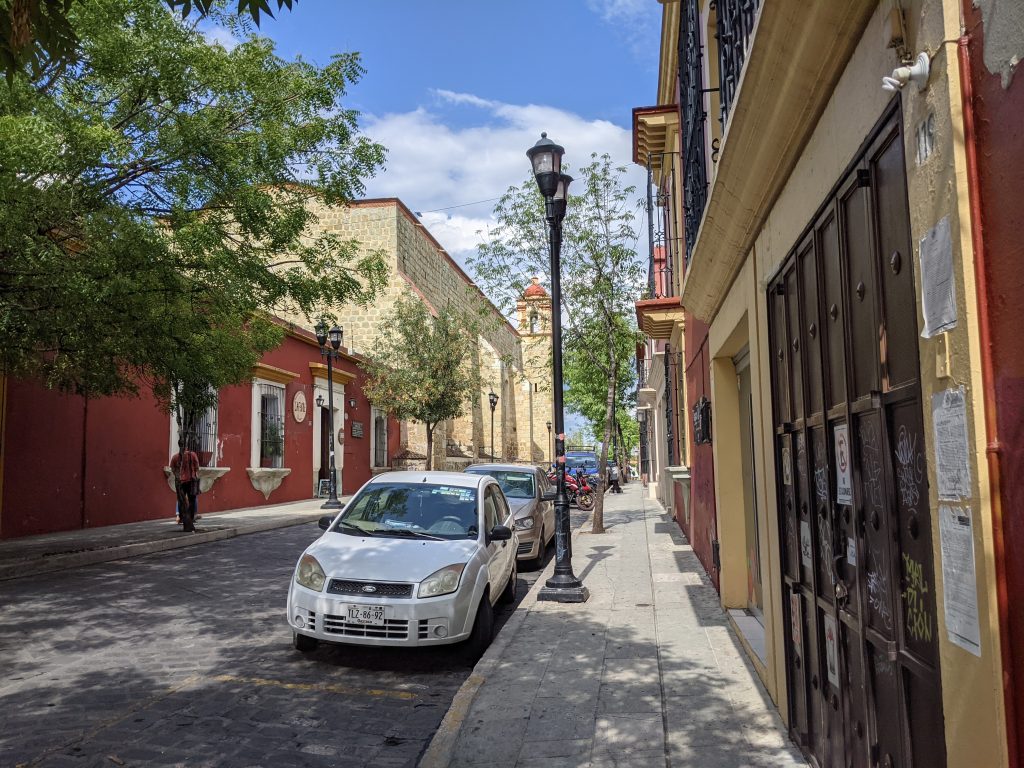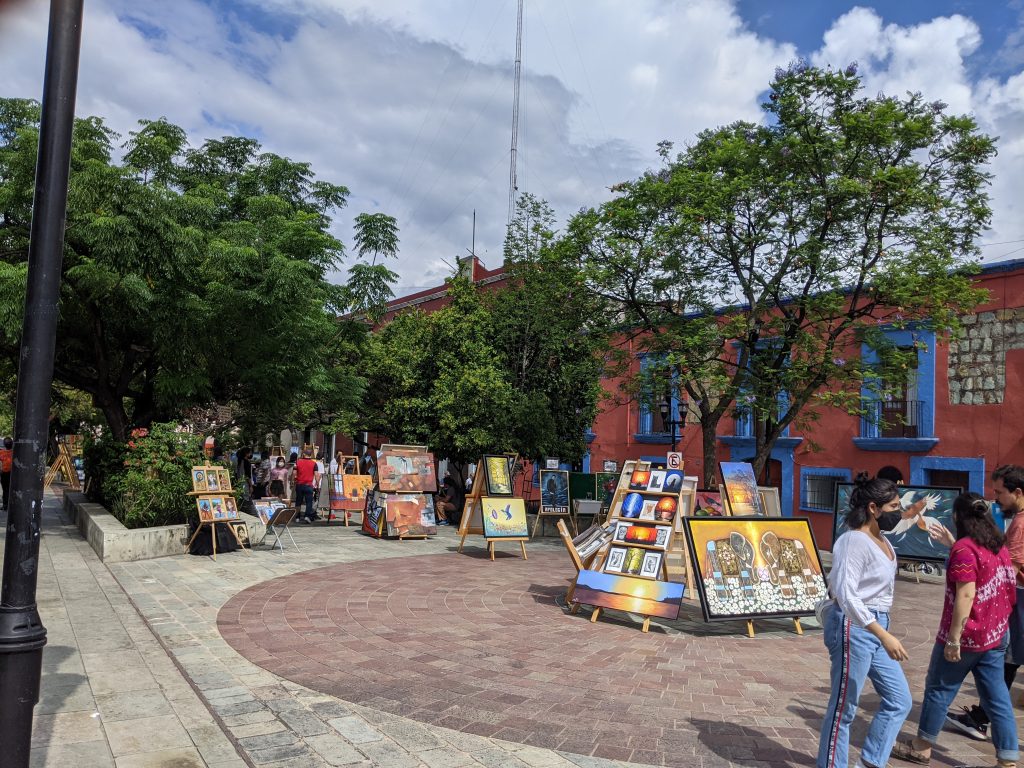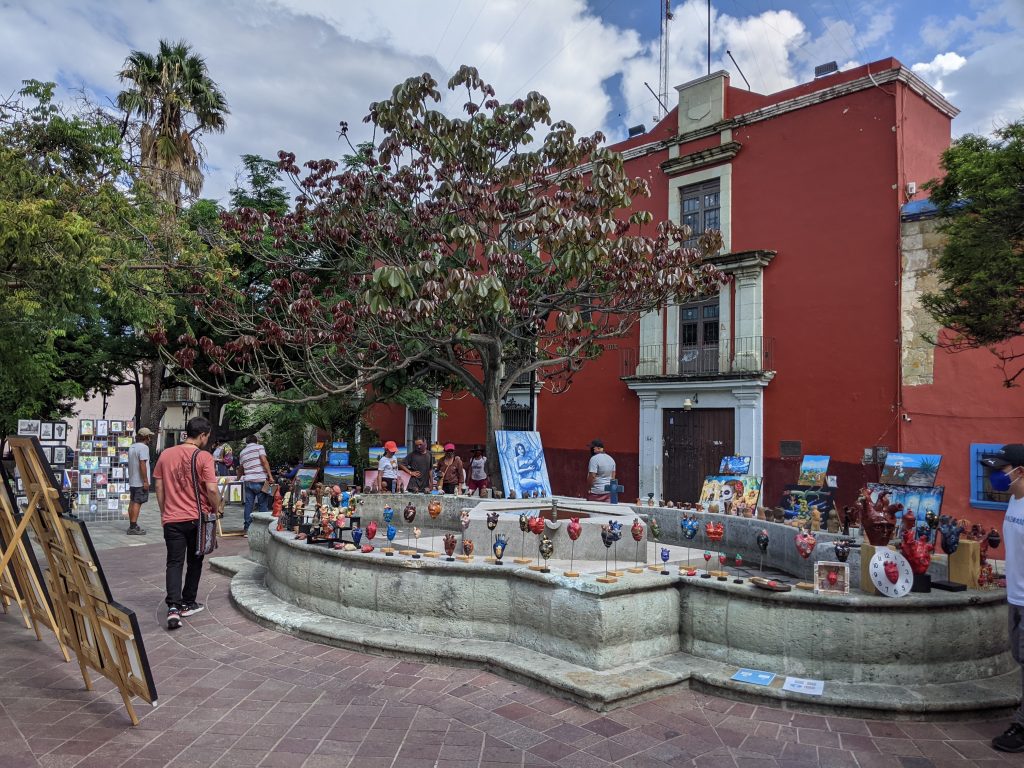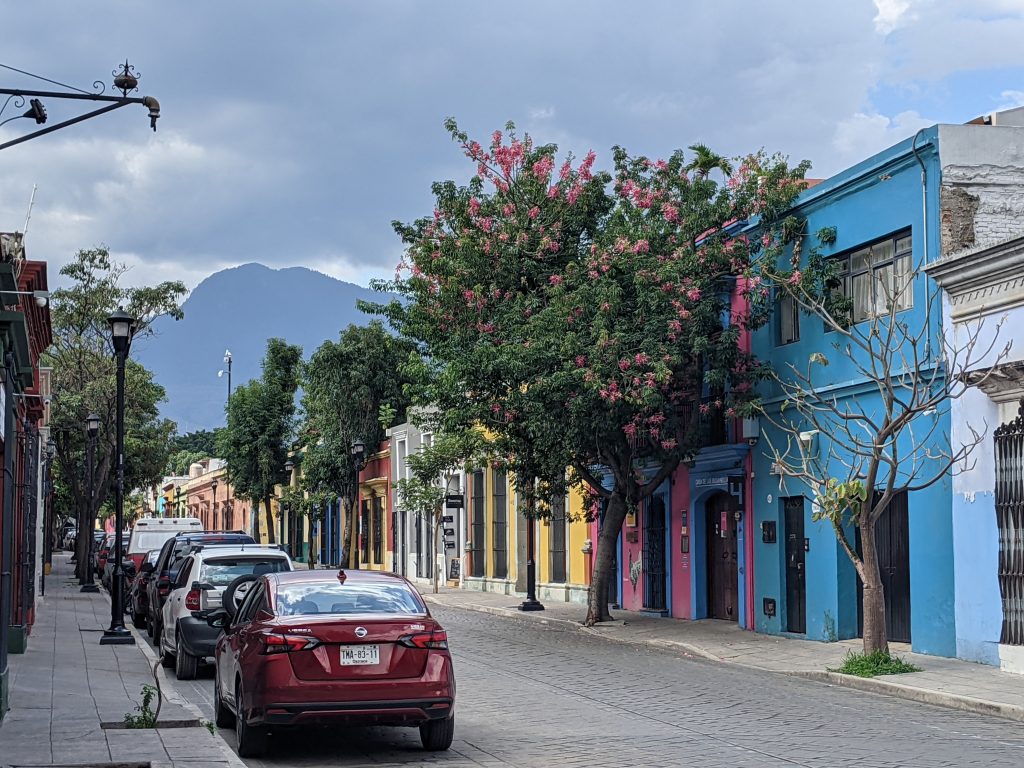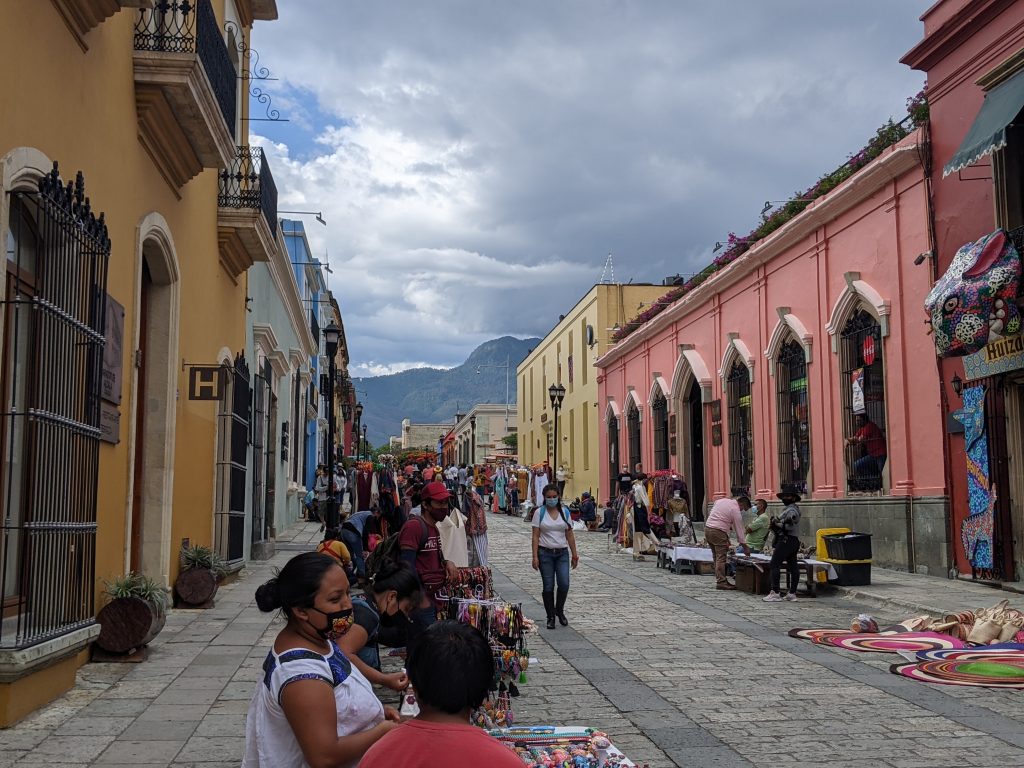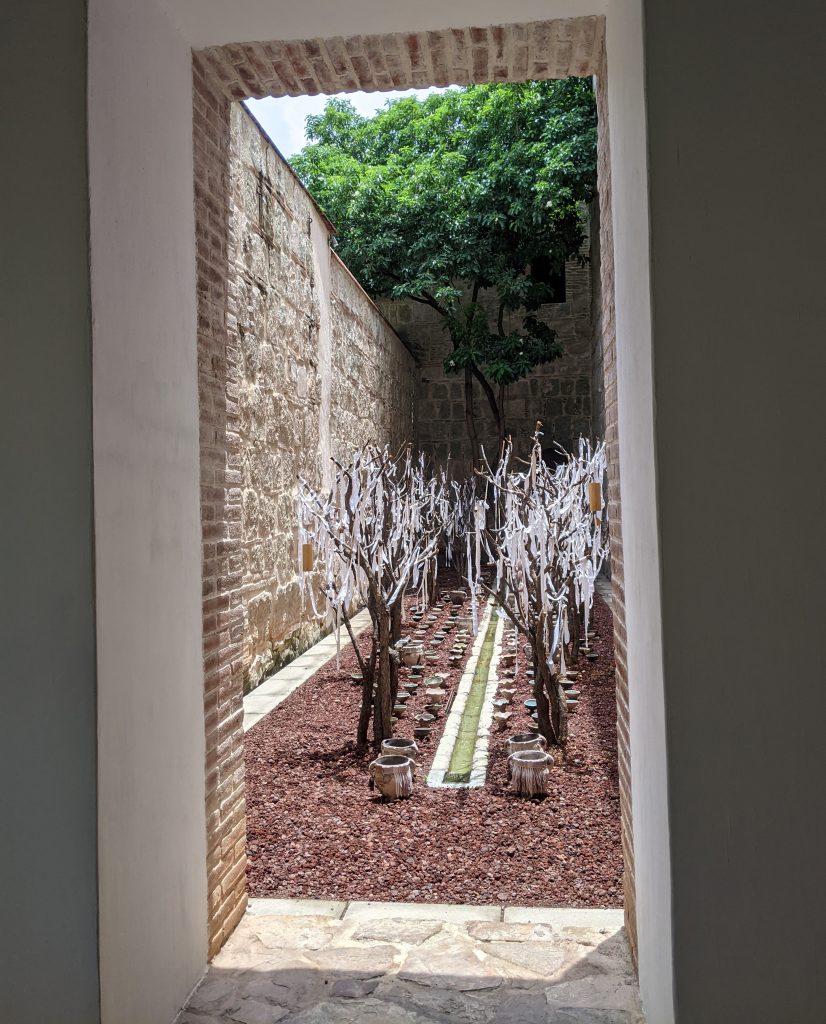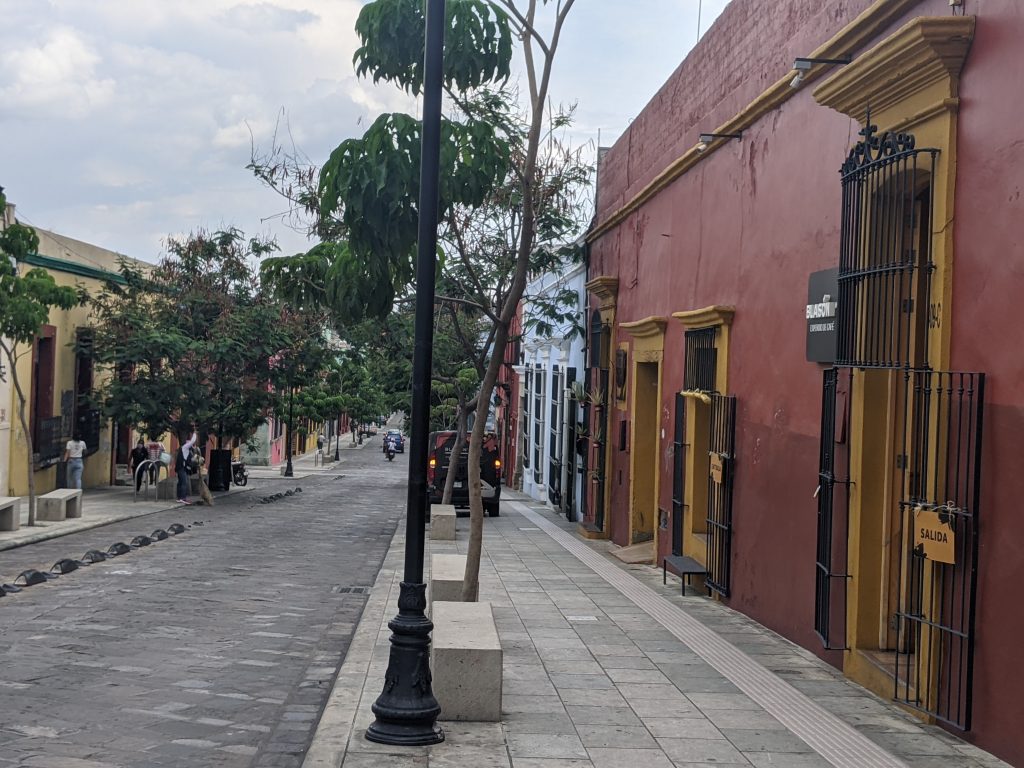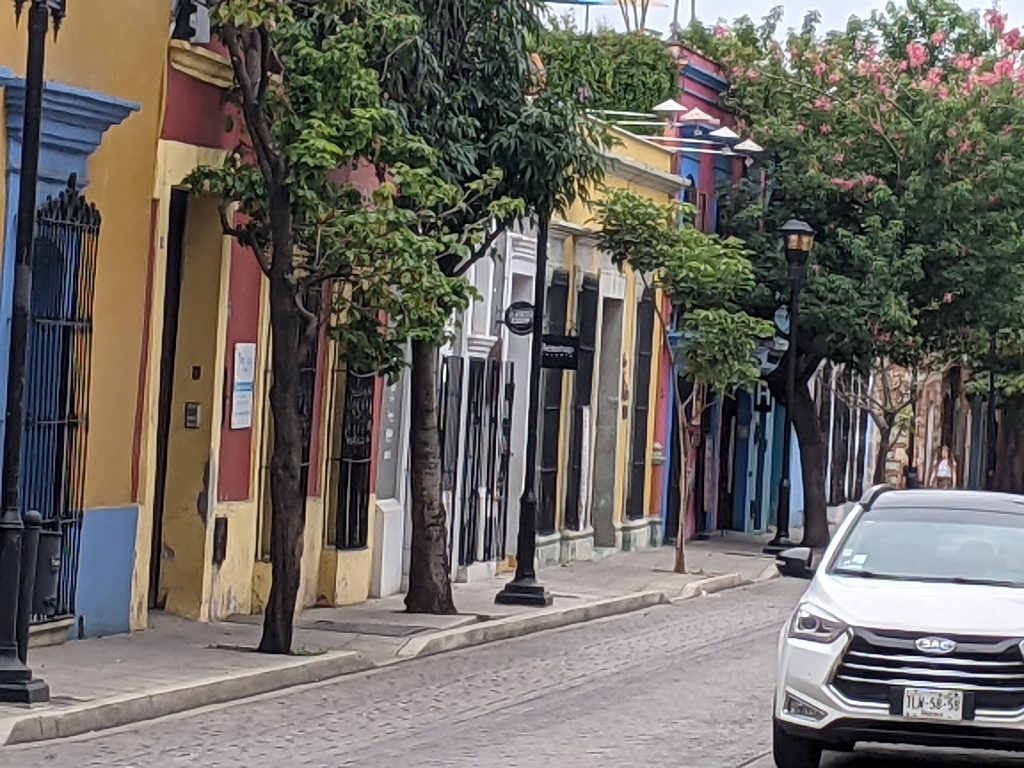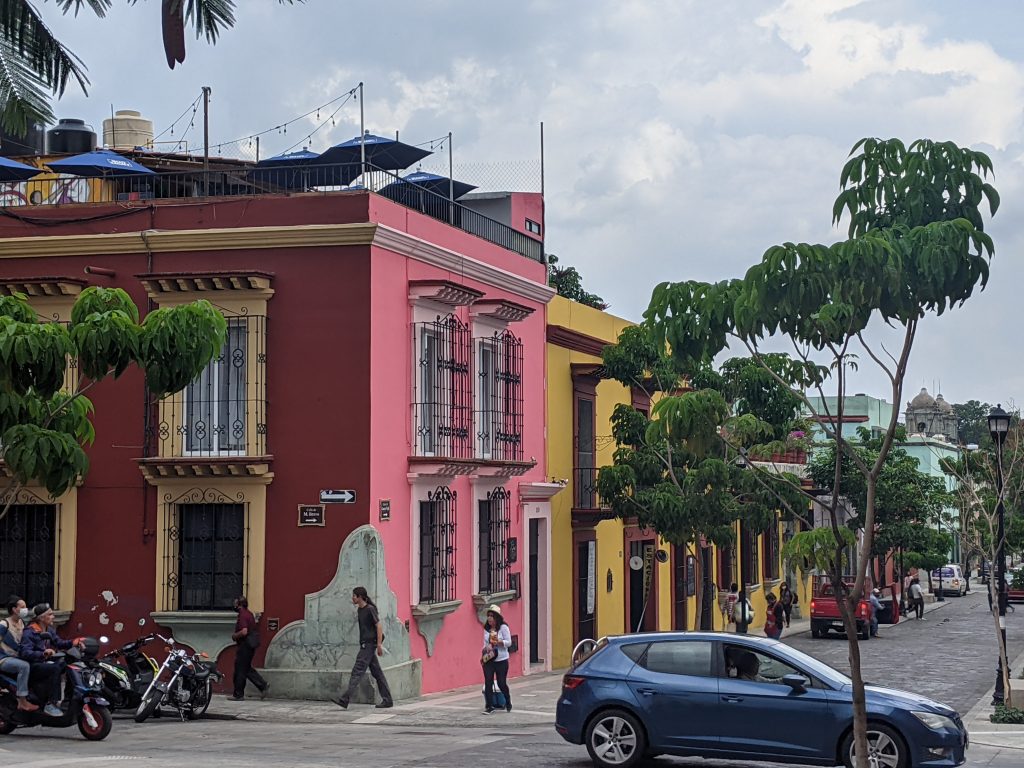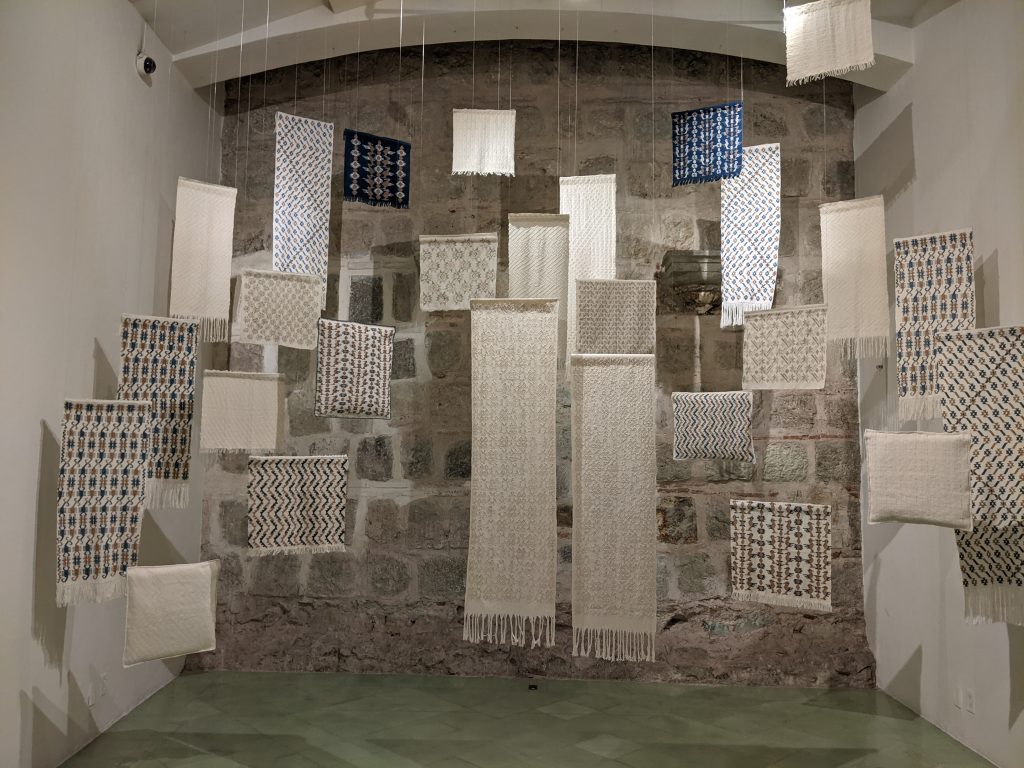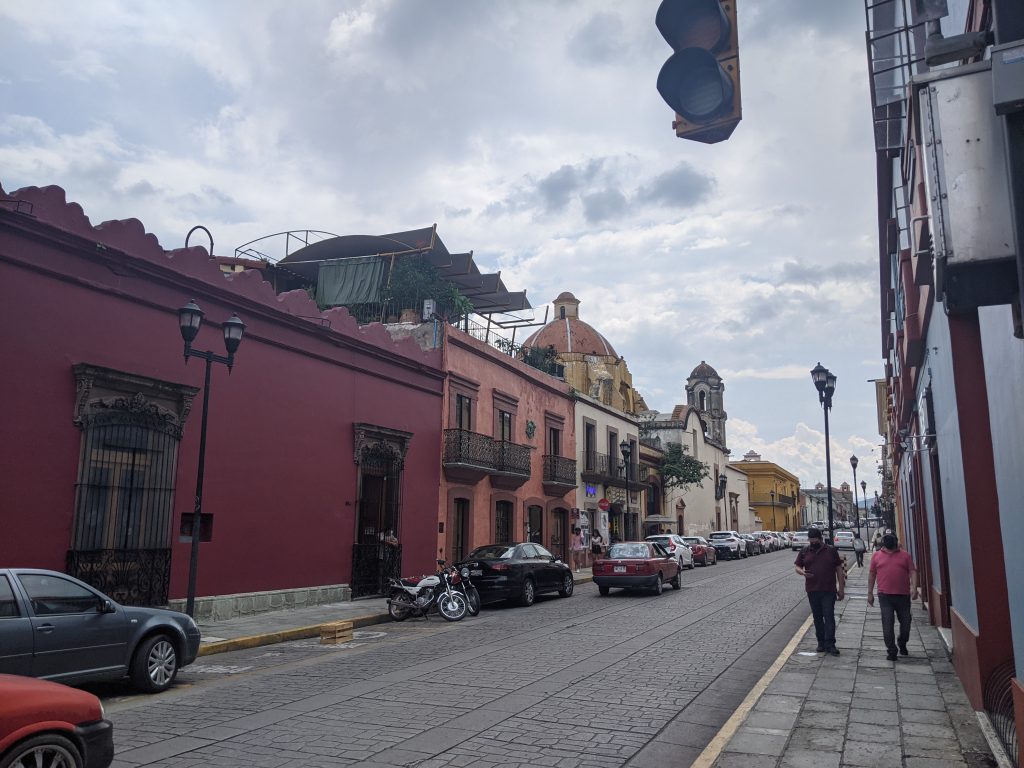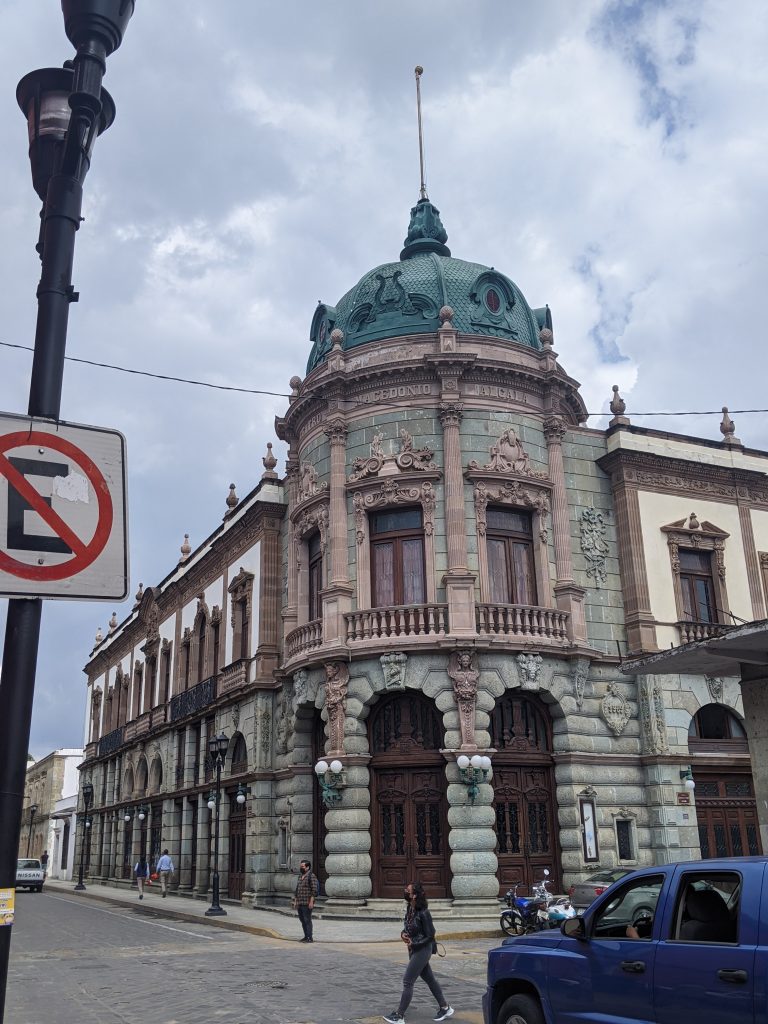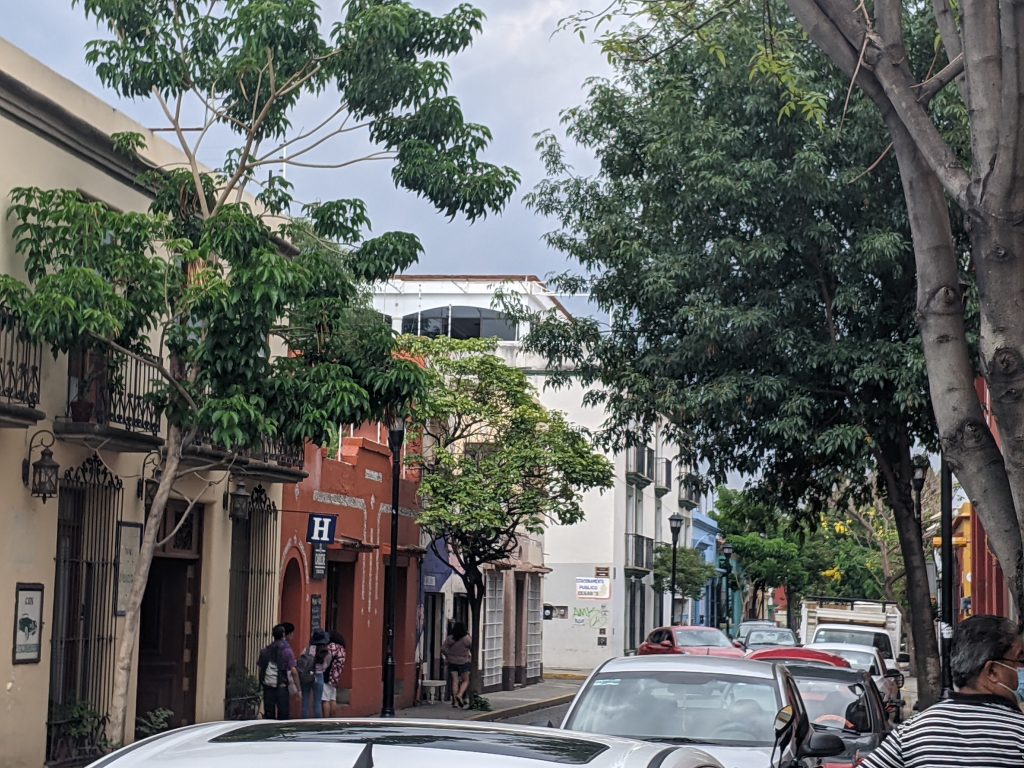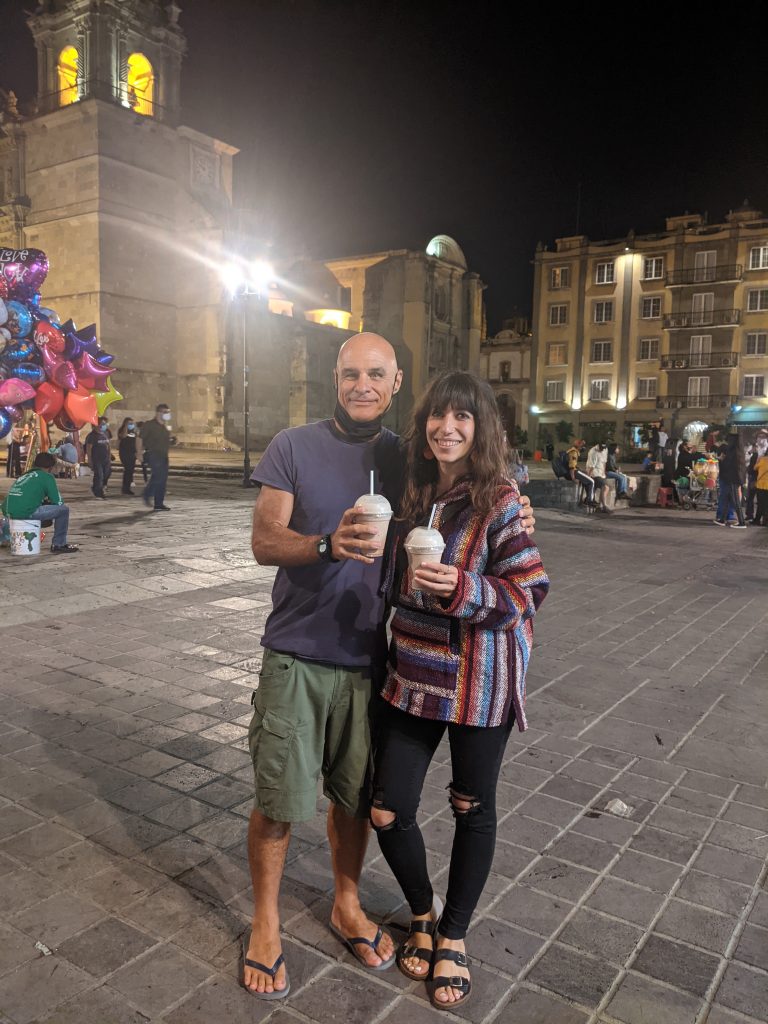Oaxaca (“waa-haa-ka”) City is a beautiful colonial city located 5,100 feet high in the foothills of the Sierra Madre mountains. It’s not as geographically stunning as San Cristobal, but it’s still very beautiful and it feels like a much more livable city. There are wide sections of the historical district where, for the first time in Mexico, I felt like I could be in Europe.
Getting To Oaxaca
There are three options for getting from Puerto Escondido to Oaxaca City. The first is a 13 hour overnight bus ride. The second is a 7 hour van ride. This doesn’t sound that bad. However, I know a few people who chose this option. They will never do it again. It’s a harrowing, motion sickness inducing ride. One friend had a man sitting next to him who threw up into a bag relatively early in the journey. The man spent the rest of the trip weaving back and forth with the van, holding the bag full of his outpouring.
So I chose option #3. A short, but relatively expensive, 40 minute flight. As you can see from the pictures below, it was the right choice.
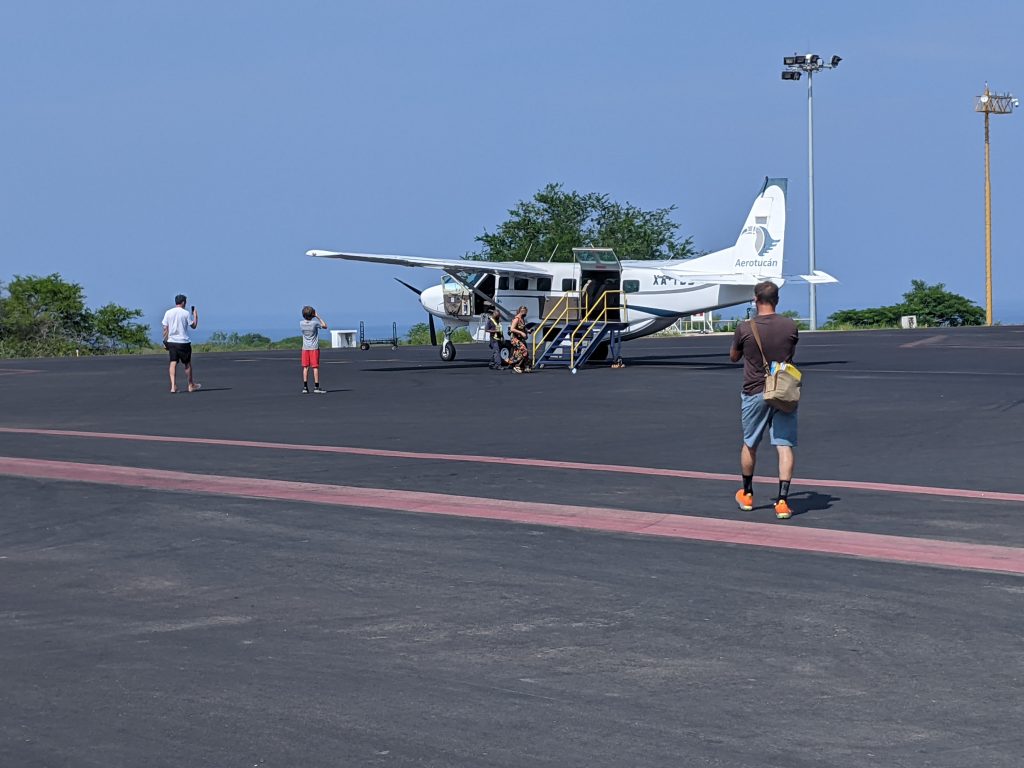
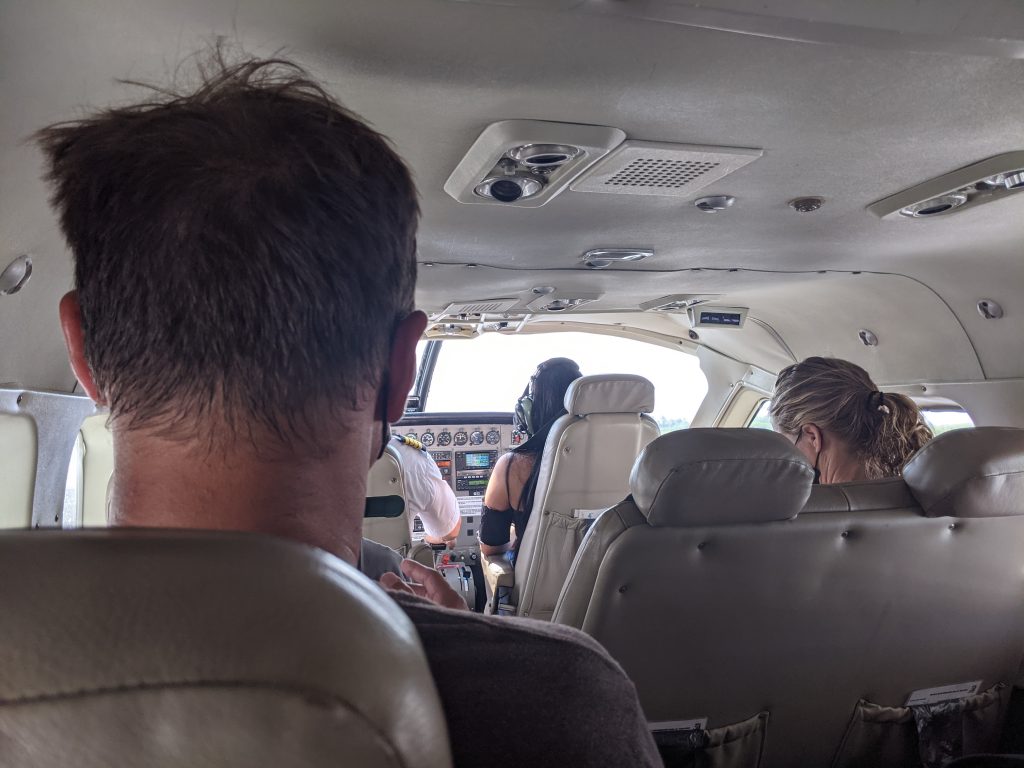
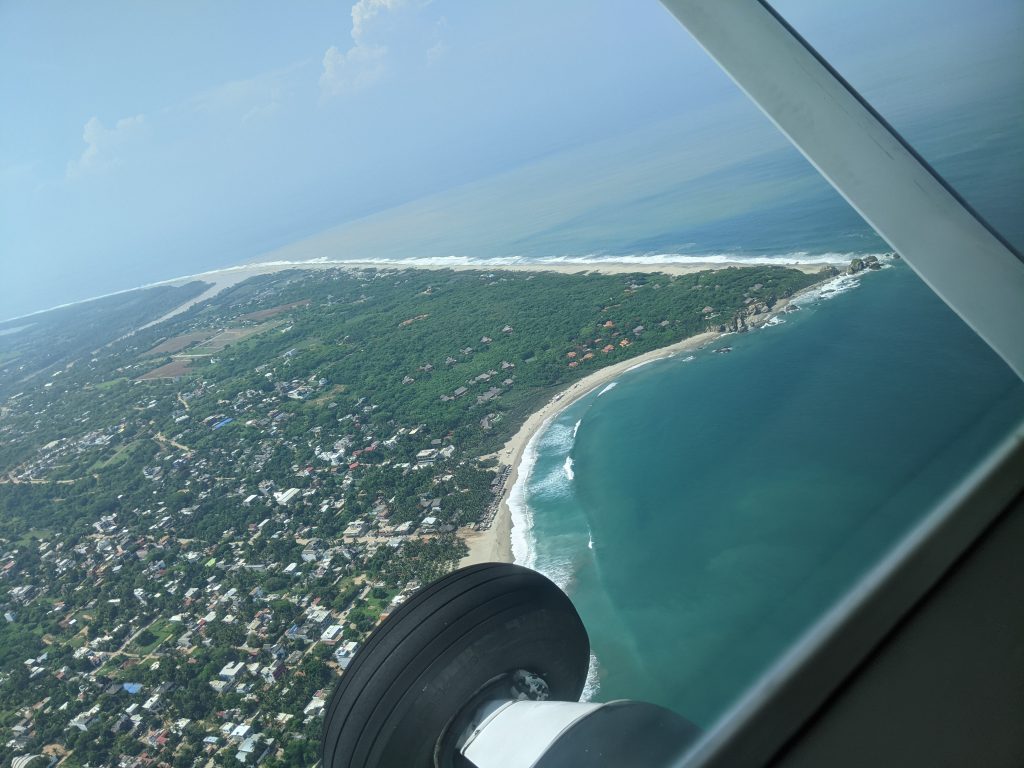
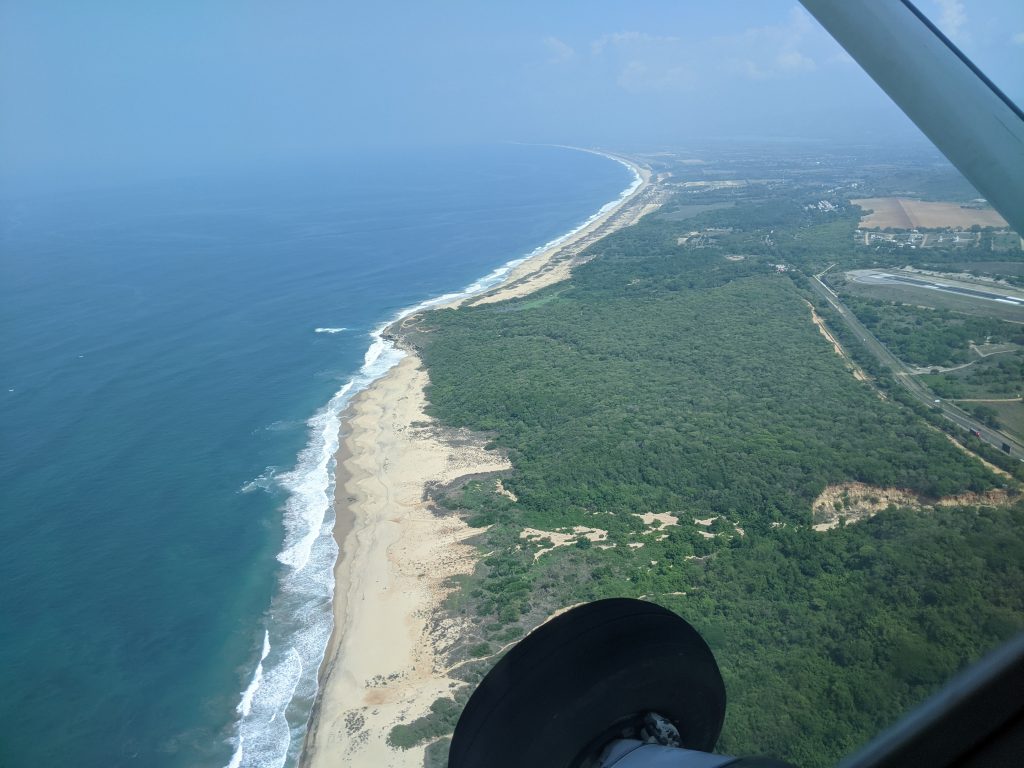
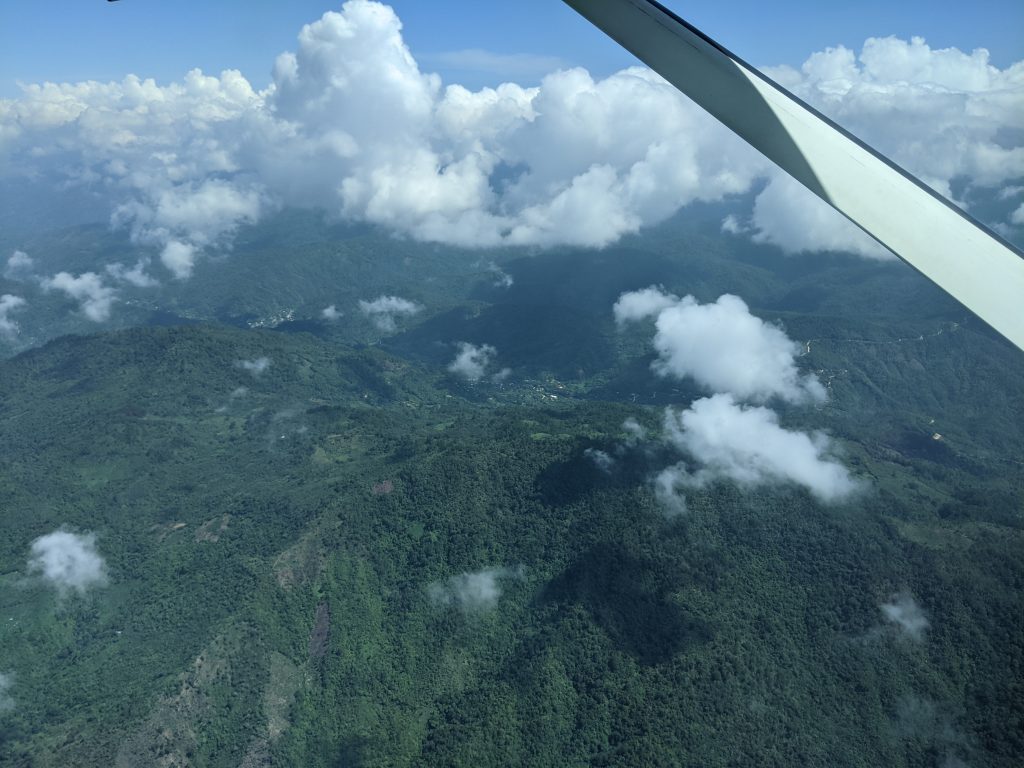
I arrived in Oaxaca City safely and checked into my Airbnb, which was in a 17th century Spanish building.
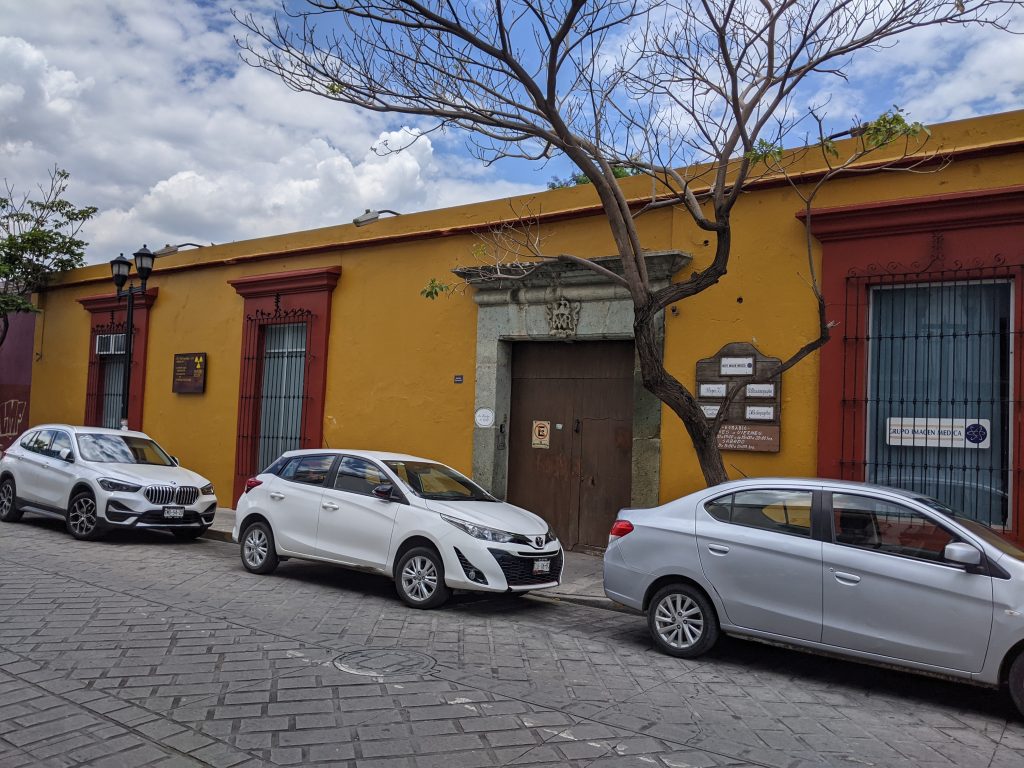
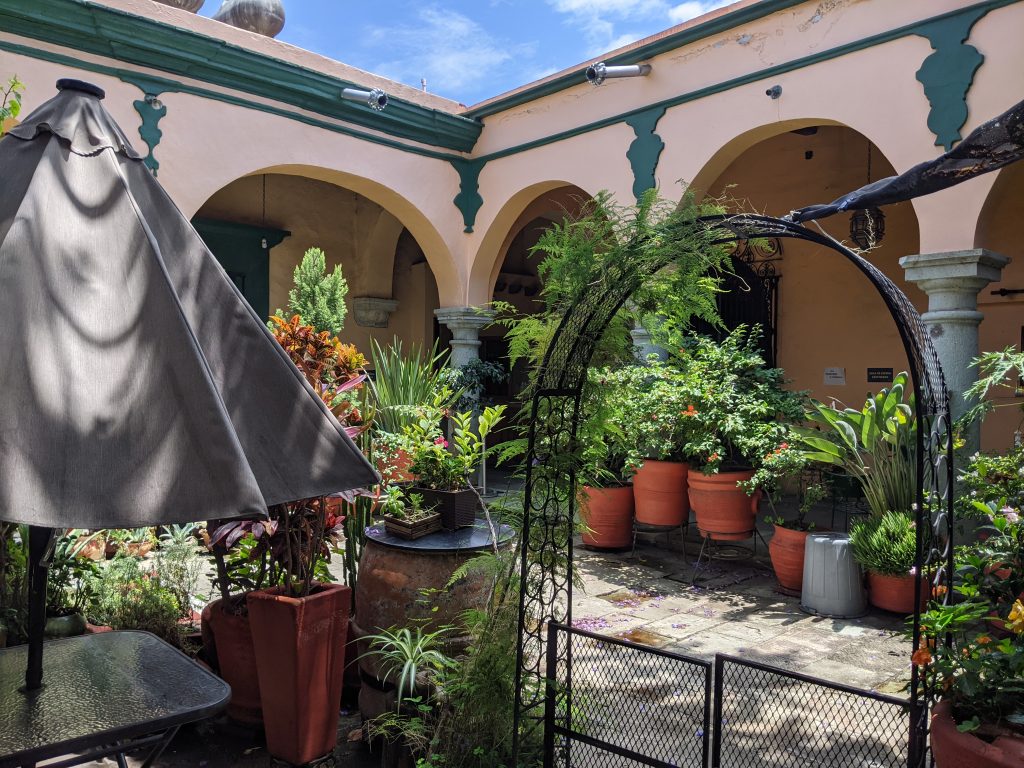
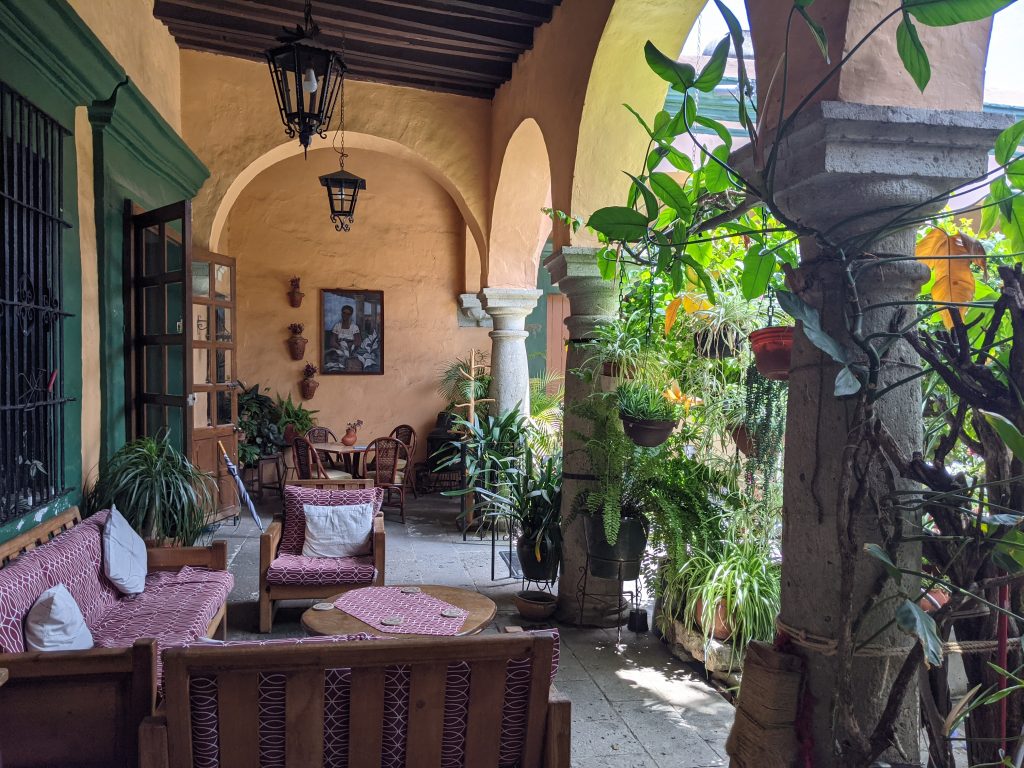
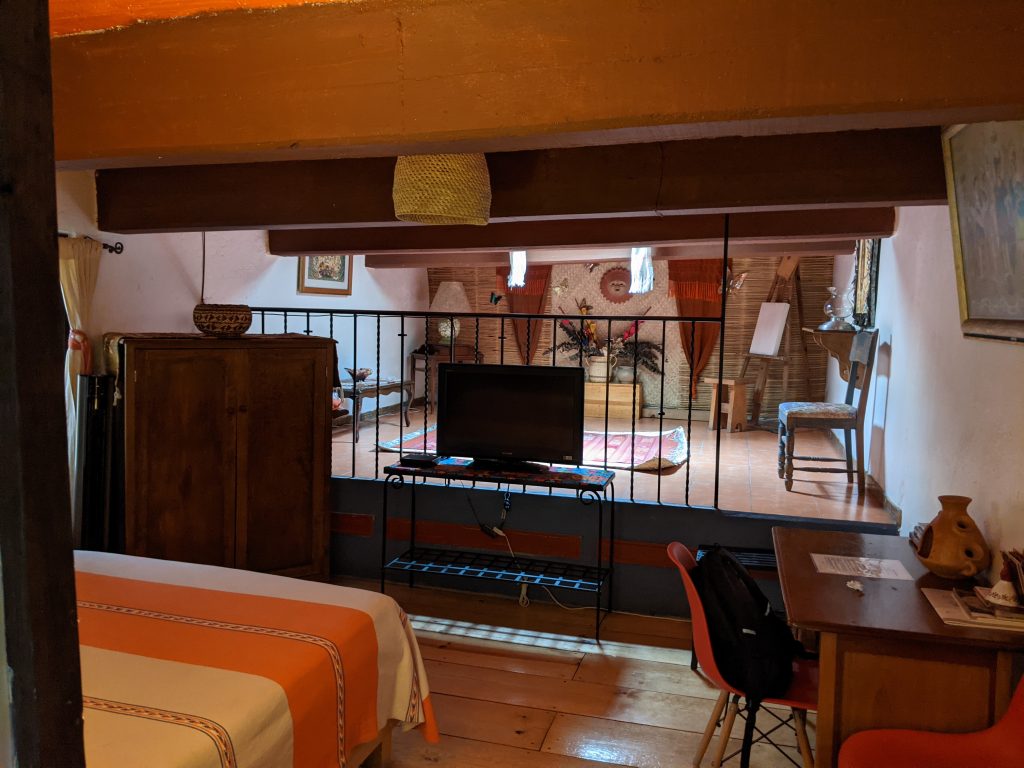
Oaxacan Food
Oaxaca is known for possibly having the second best food in Mexico outside of Mexico City. It’s especially famous for its mole sauces, its tlayudos, its mezcal and its chapulines. Tlayudas are a huge toasted tortilla filles with all kinds of treats and chapulines are deep fried grasshoppers seasoned with chile and lime juice. Yes, you read that correctly, grasshoppers. As you can see, I sampled all four in the few nights I was there.
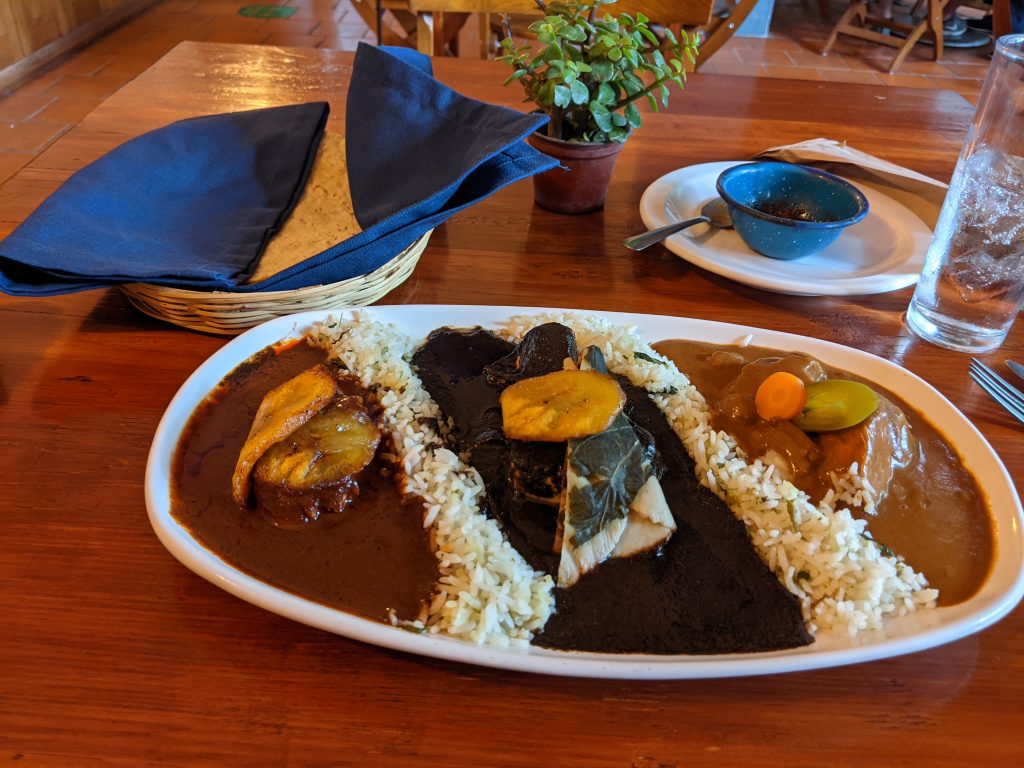
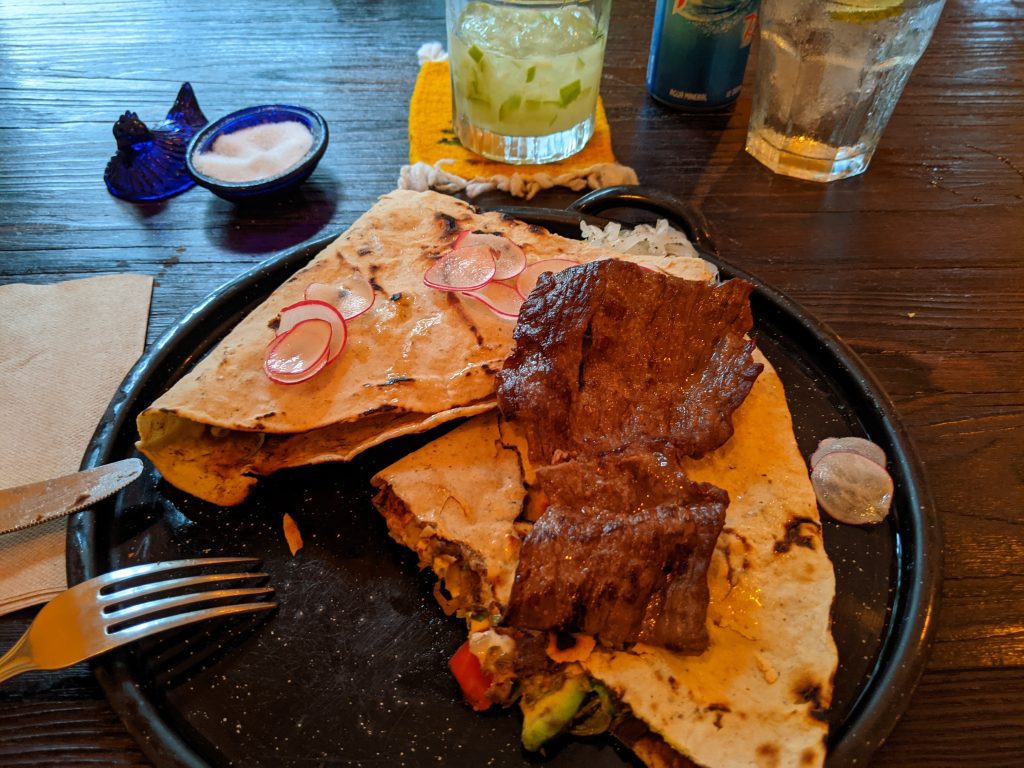
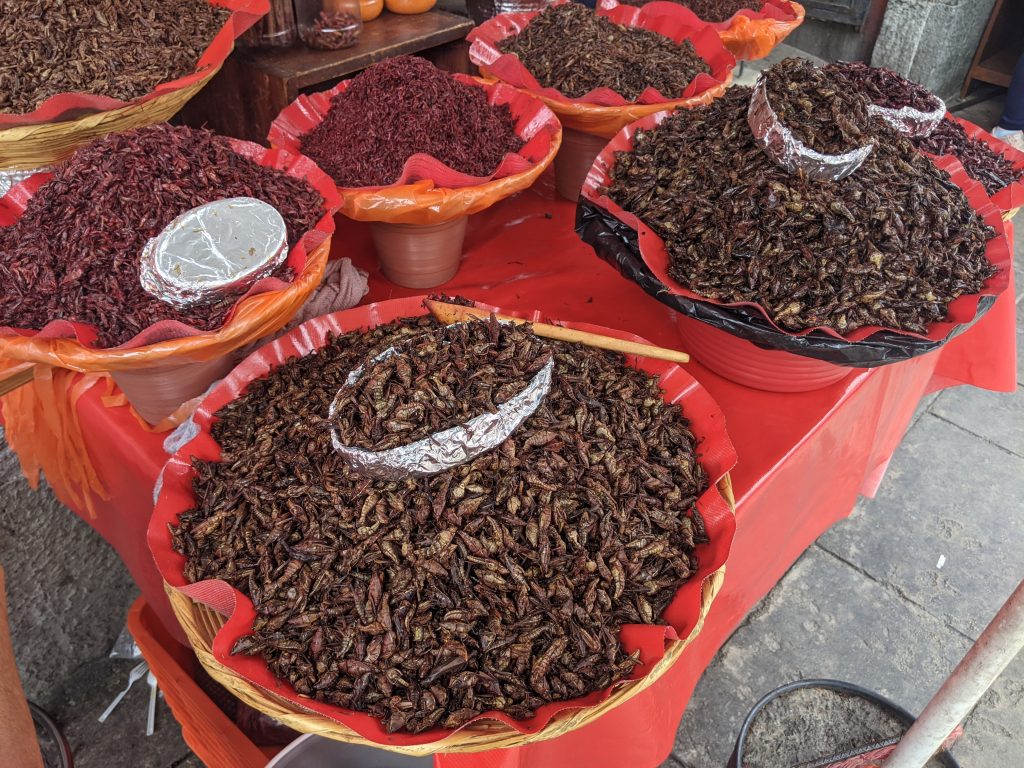
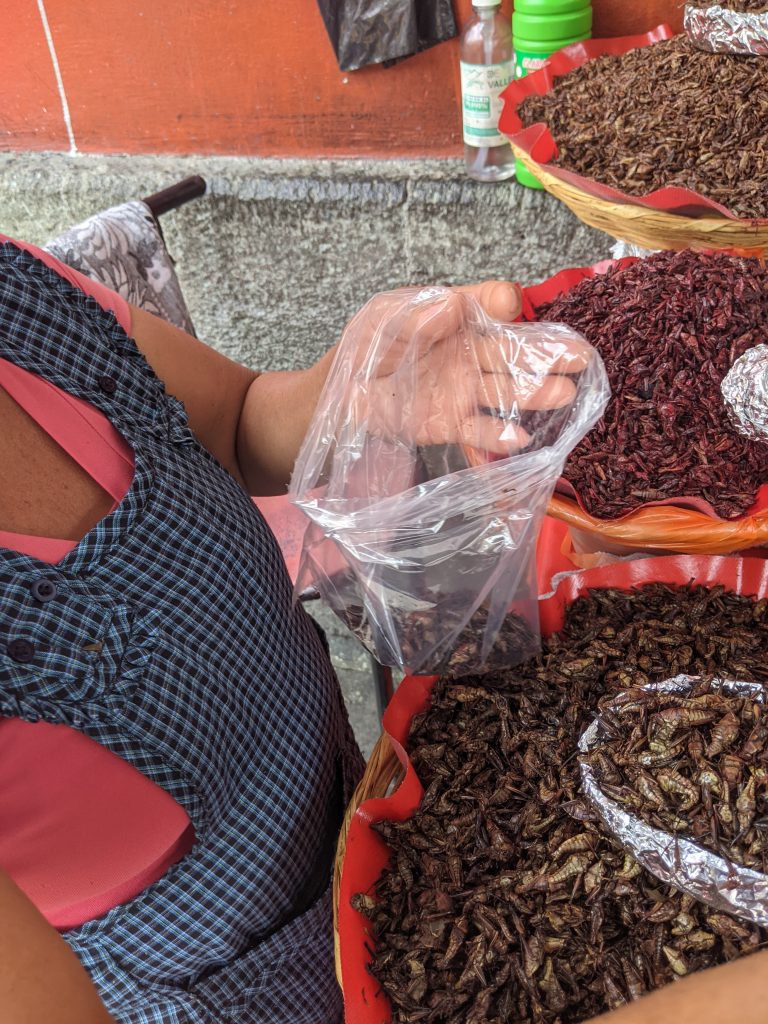
Two Oaxacan Churches
The first church pictured below is the Basilica Memor de Nuestra Senoria de la Soledad. It was built between 1682 and 1690. It’s one of Mexico’s most important religious sites because it’s built on the site where a statue of the Virgin Mary was mysteriously found. Some versions of the story even say that Mary herself miraculously appeared. It’s a beautiful church and a copy of the statue of Mary is in the middle of the alter.
The second church is the Catedral Metropoitana de Oaxaca, where construction started in 1535, but had to be rebuilt a few times because of earthquakes. It’s the seat of the Catholic Church in the region. The exterior is wonderful, but the interior is not that sublime. The interesting part is the large computer monitors around the church so worshippers with bad site lines can still see the service.
Unfortunately, the jewel of Oaxacan churches, Santo Domingo de Guzman, was closed because of Covid restrictions when I was there.
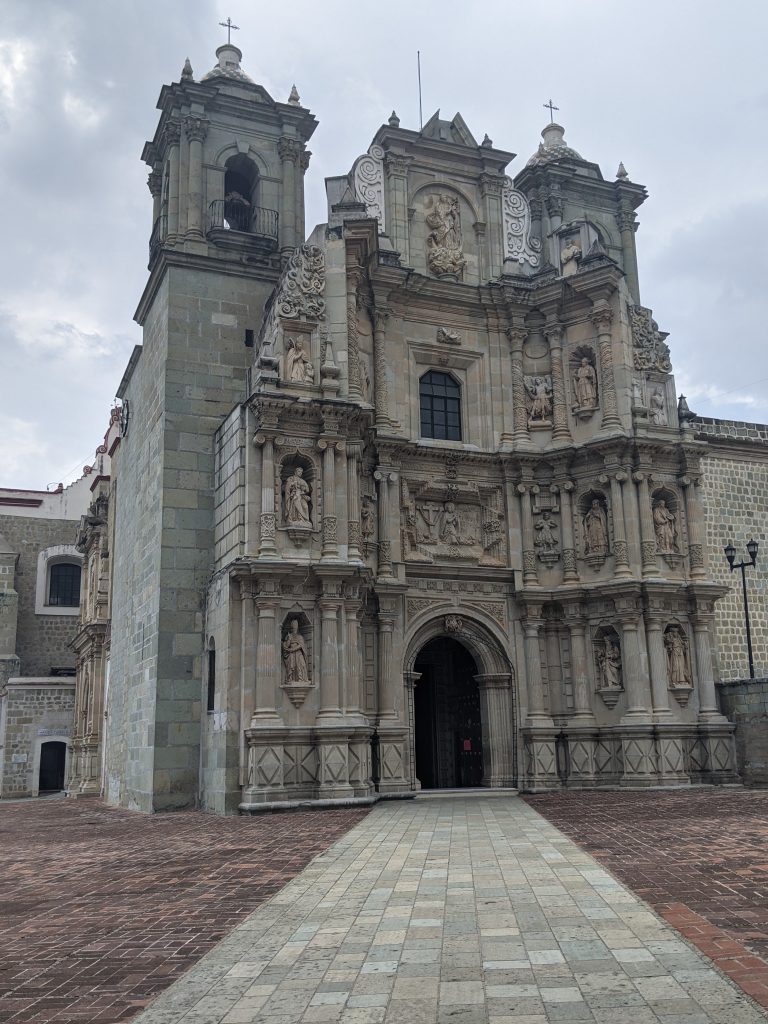
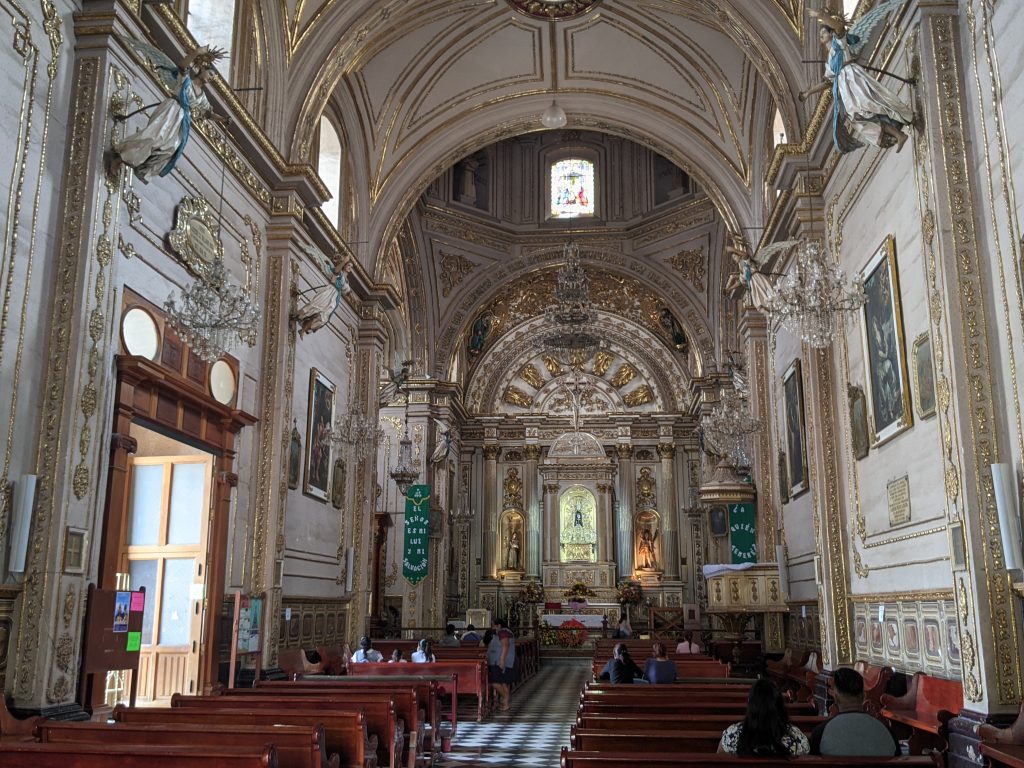
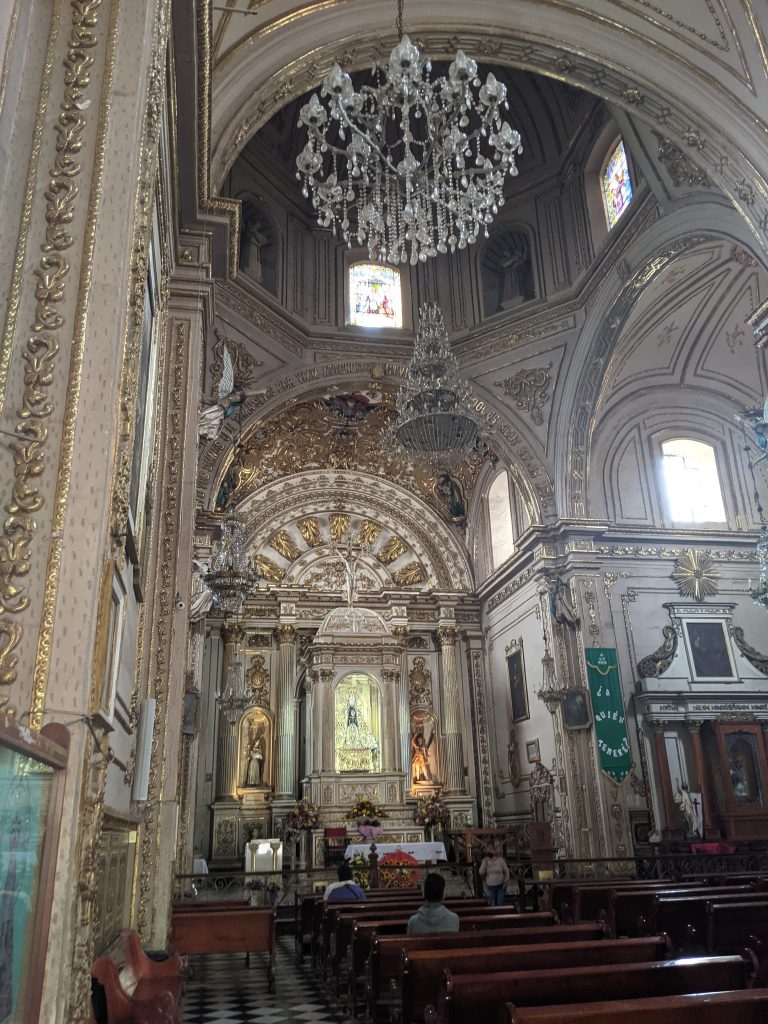
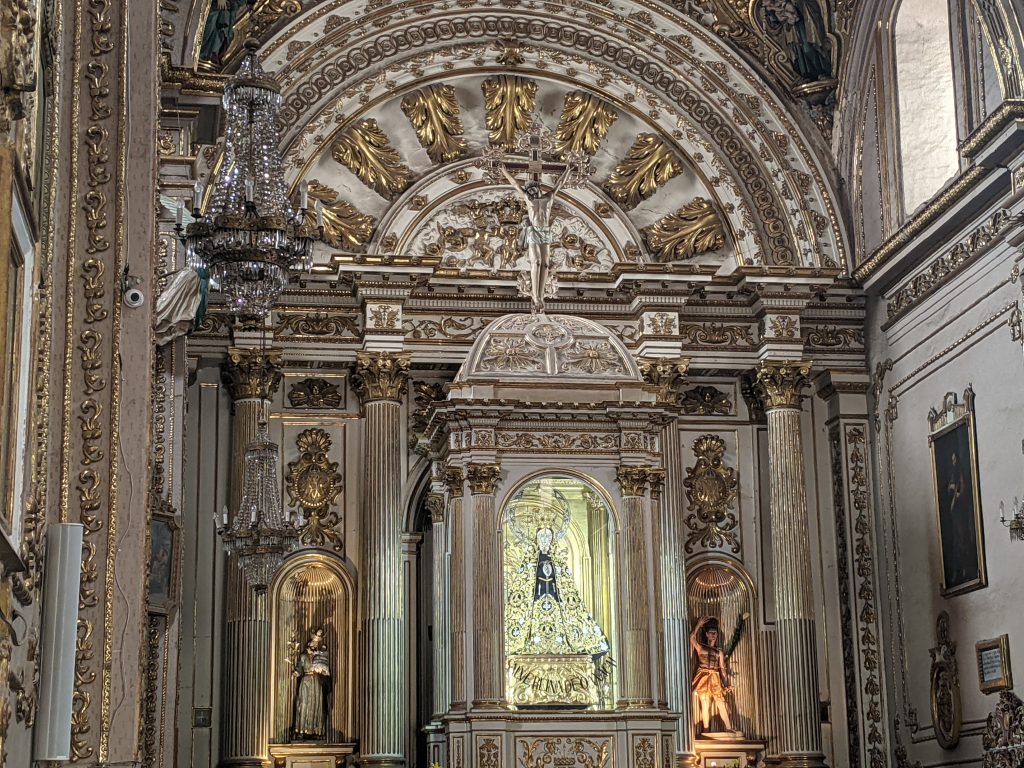
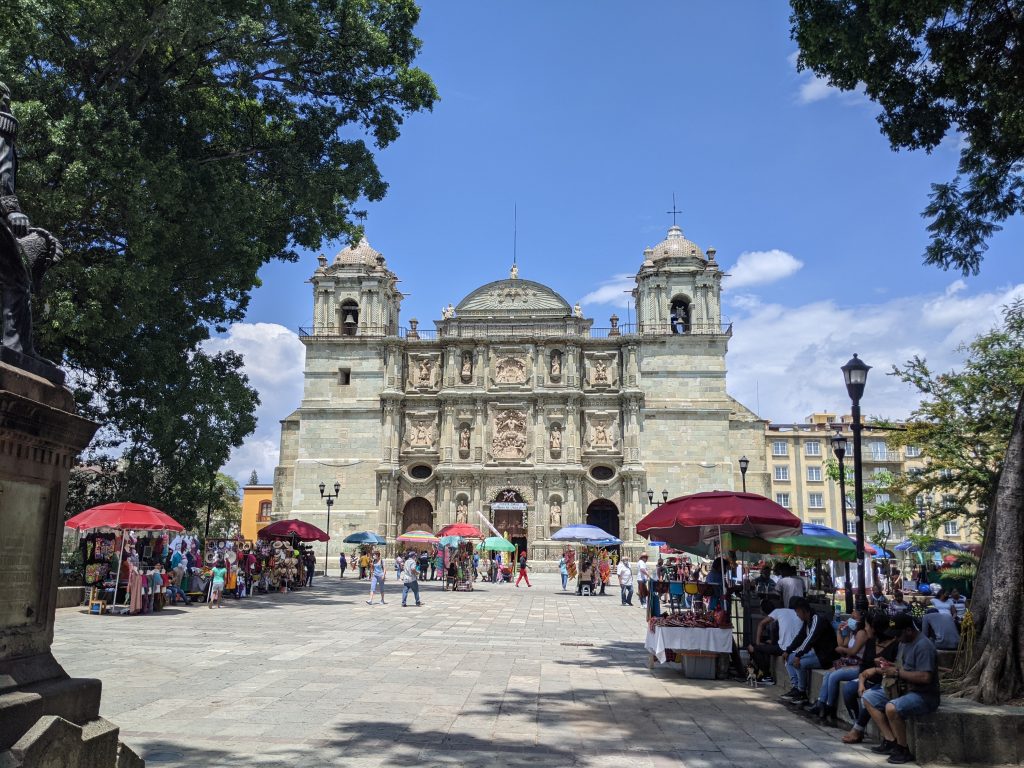
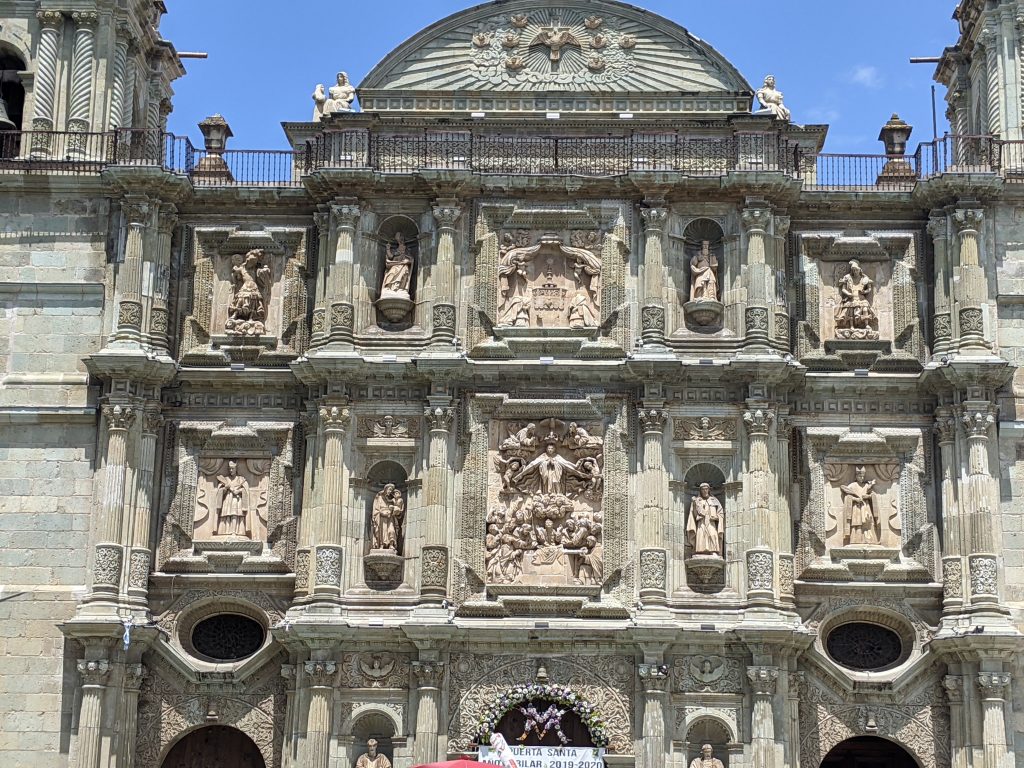
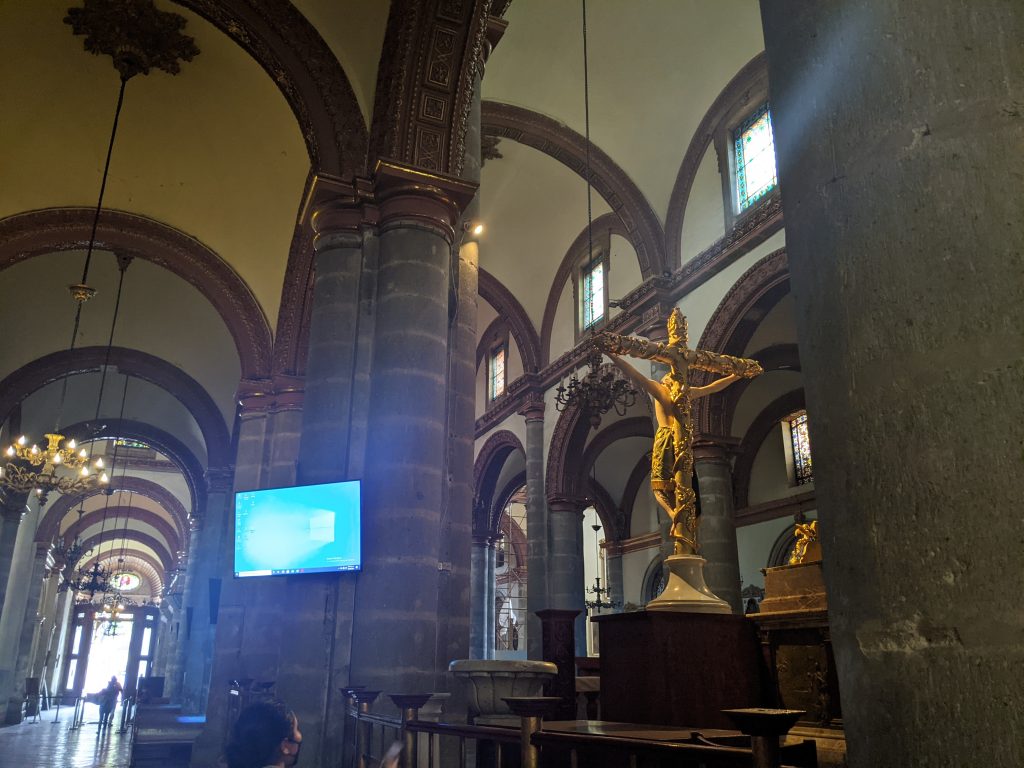
Oaxacan Streets
Below are some street scenes that show the colorful beauty of the city.
